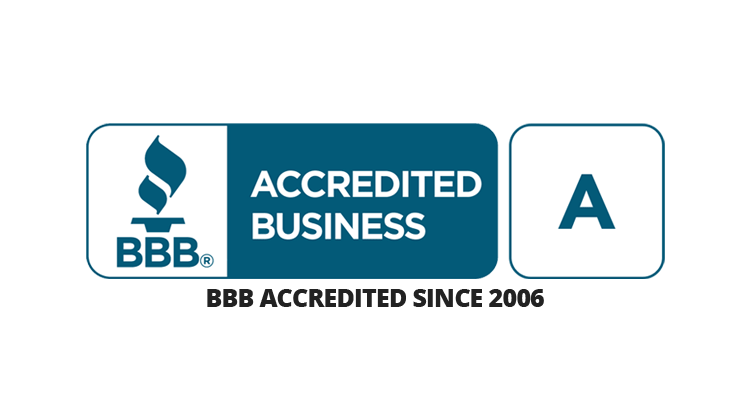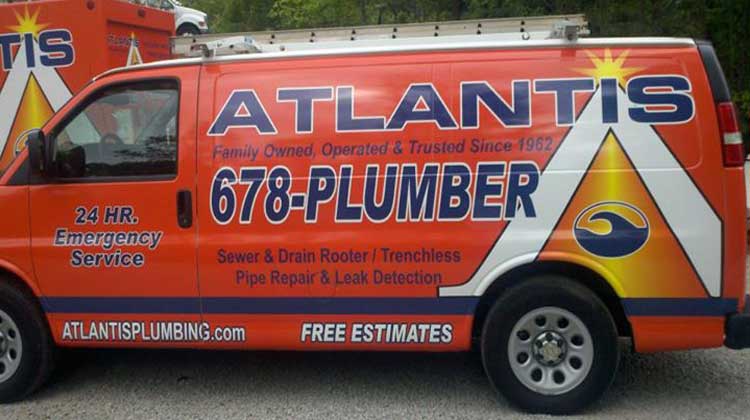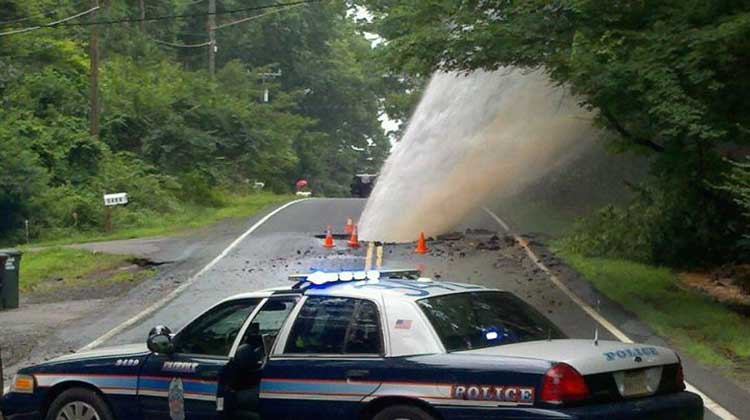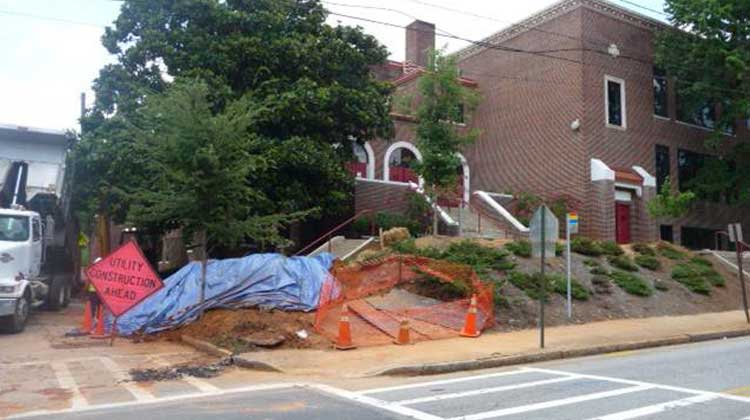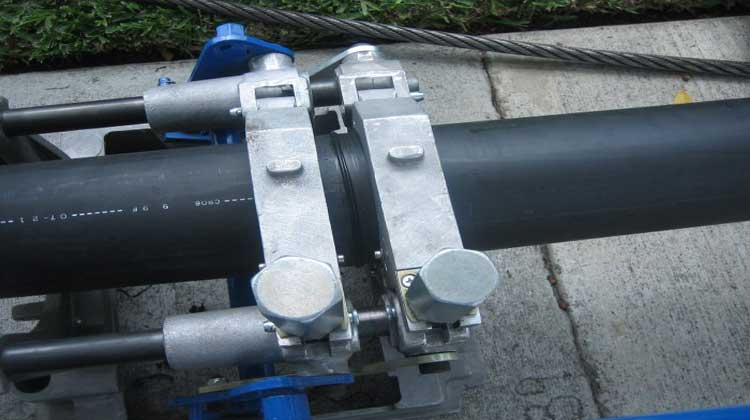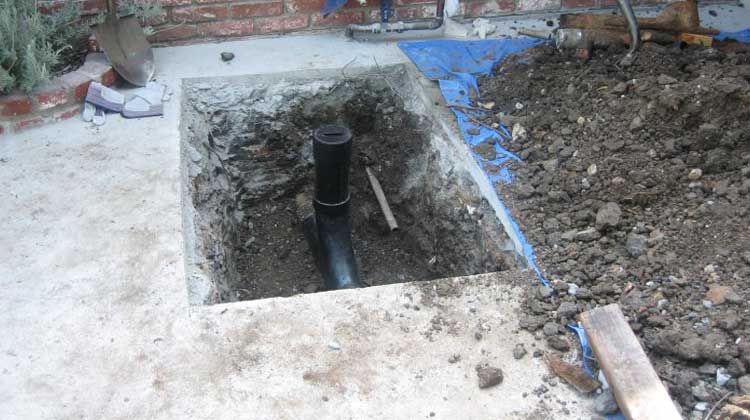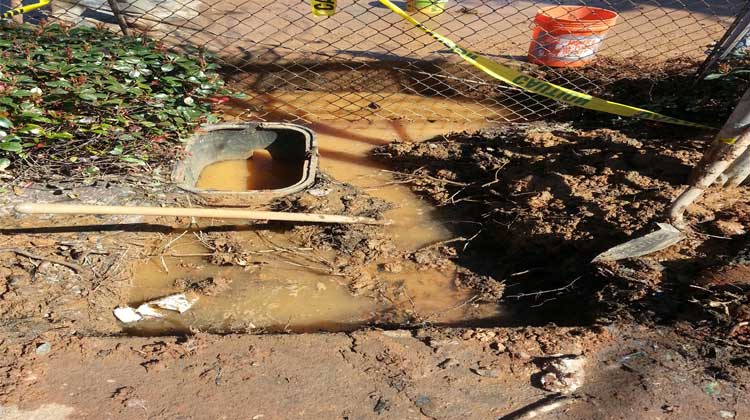What Is a Water Service Line?
A water service line (Also referred to as: yard service line, yard service, water service, water line, water main line, outdoor water supply, water supply line, outdoor water line and many other terms used by the water department or local plumbers) is the line going from the county/city water meter to the connection to the house. The connection to the house can be either a stub out from the house or to a point where the water line enters the house.
There may be a ball valve or gate valve at the entry point to the house. The water line is generally followed by a pressure reducing valve (PRV) which controls both flow and pressure, as the pressure of the incoming water is generally very high and can be destructive to the indoor plumbing if the pressure is not lowered to the recommend operating range of 50-65 PSI (most manufacturers plumbing fixture warranty are void after the plumbing code maximum allowable indoor water pressure of 80PSI. Water service lines can be made from various materials such as copper, PEX, Black HDPE polyethylene, PVC (Poly Vinyl Chloride), lead, galvanized steel, ductile iron, CPVC, blue polybutylene and grey polybutylene.
The most reliable materials currently on the market are Black Polyethylene HDPE, PEX and Copper pipe for most applications. Some soil types and water qualities are not suitable for copper pipe and may result in premature pitting of the copper. The most frequent pipes leaking are generally galvanized steel, polybutylene pipes, PVC pipe and copper pipe.
Galvanized pipes generally leak due to age and generally have symptoms of low water pressure and rusty water prior to leaking. Polybutylene pipes leak due to a manufacturing defect in the pipe which cause the pipe to rupture. Polybutylene pipe were subject to a class action lawsuit between 1995 and 2009 which resulted in hundreds of thousands of homeowners having there polybutylene lines replaced for free.
PVC water lines generally leak at connections due to poorly designed fittings and the pipe becoming too brittle for high pressure water . Water lines also leak due to improper installation, tree roots damaging pipes, ground settlement, pipe damage due to heavy vehicle traffic, ground shifting, lightning striking pipe, improper bedding of the pipe in rocky soil, freezing pipes, wear due to thermal expansion and contraction, and homeowners/ contractors damaging pipe during landscaping or other excavation project and I’m sure there are some other rare instances that occur.
How to Locate Leaks in Water Lines?
The first step in locating a leak is determining which part of the line is leaking. This is generally done by visibly seeing water or by valving off sections of the pipe. The next step is tracing the line, so that leak detection can be done directly over the pipe line. Tracing metallic pipes is relatively easy by directly connecting a frequency transmitter and tracing the line using a receiver. Plastic lines require using a metal tracer wire, fishing it up the line and the using the same technique use on a metallic line. Long lines can be leak detected easier by installing valves at midpoints or know points where sections can be tested. The three most common forms of leak detection we use are sound (ultrasonic leak dectection), temperature (thermal imaging ) and gas sniffing ( using helium/hydrogen gas injected into the line and then using a sniffer to determine the location of the highest gas concentration). Leak detection takes time and experience. Frequently the cost of replacing small diameter short distance runs of pipe is less than the cost of locating leaks.
Water Line Leak Repair
Water line repair is generally straight forward process. Using mechanical coupling or glue coupling almost any pipe can be repaired. Some galvanized and polybutylene lines may be difficult to repair due to advanced levels of deterioration which prevent standard coupling from sealing around the pipe. Though some level of temporary patch can almost always be done on polybutylene piping. Heavily corroded galvanized pipe may no longer be round and mechanical coupling may still seep water. PEX, Copper, PVC, Black HDPE and ductile iron can be repaired with a warranty which we can stand behind.
Water Line Replacement
Water line replacement can be done using either open trench (average trench width is 6”), trenchless replacement, pipe lining or directional drilling. Some water lines may require a combination of technology to save landscaping, driveway repairs, sidewalk repairs and reduce the amount of work needed to restore the area of the new water service line. Though not possible on every home, many water lines can be completed replaced with little or no disturbance to the yard or driveway at all. New residential water lines come with a 10 year parts and labor warranty, and also many come with up to a 30 year manufacturer warranty.
Water Line Repair and Replacement Cost
The cost of water line repair and replacement varies on every project. Distance, pipe diameter, landscaping, other buried underground utilities, concrete, pipe depth and other factors determine the price. Almost all water line repairs and replacements require a plumber to visit the home or business to properly give a price and to avoid any miscommunication over the phone.
We offer water line leak repair in Atlanta, GA and surrounding areas:
Fulton County, Bartow County, Cobb County, Dekalb County, Cherokee County, Gwinnett County, and Douglas County.
Acworth GA, Atlanta GA, Austell GA, Cartersville GA, Doraville GA, Douglasville GA, Hiram GA, Kennesaw GA, Lawrenceville GA, Lithia Springs GA, Loganville GA, Mableton GA, Marietta GA, Powder Springs GA, Rockmart GA, Roswell GA, Smyrna GA, Tucker GA, Villa Rica GA, Vinings GA, and Woodstock GA.


